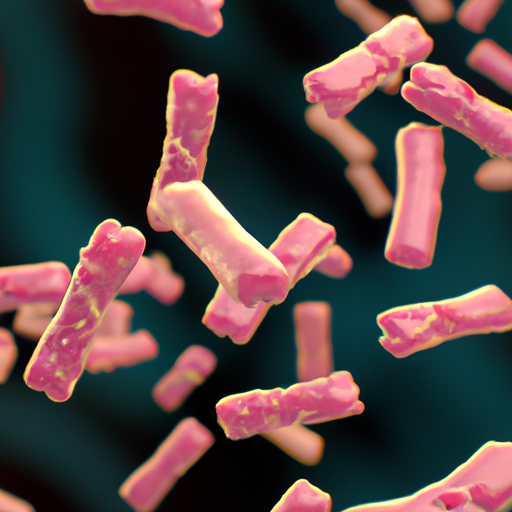Staph infection, short for Staphylococcus infection, is a common bacterial infection that can cause a range of symptoms and complications. This type of infection is caused by the Staphylococcus bacteria, which can be found on the skin or in the nose of healthy individuals. While Staphylococcus bacteria are usually harmless, they can cause infections when they enter the body through a cut or wound. In this article, we will explore the various manifestations of Staph infection and discuss its treatment options.
Fever: A Common Symptom
One of the most common symptoms of a Staph infection is fever. When the body is fighting off an infection, it often raises its internal temperature to help kill off the invading bacteria. If you have a Staph infection, you may experience a high fever, which is typically accompanied by other symptoms such as fatigue, chills, and sweating.
Skin Infections: Boils, Cellulitis, and Impetigo
Staph infections often manifest as skin infections, which can take different forms. Boils are one common type of skin infection caused by Staphylococcus bacteria. These painful, pus-filled bumps can appear anywhere on the body and may require medical intervention to drain and heal properly.
Cellulitis is another skin infection that can be caused by Staphylococcus bacteria. It occurs when the bacteria enter the deeper layers of the skin, causing redness, swelling, and tenderness. Cellulitis can spread rapidly and may require oral or intravenous antibiotics to treat effectively.
Impetigo is a highly contagious skin infection that primarily affects children. It is characterized by red sores that quickly burst and develop a honey-colored crust. Impetigo can be easily spread through direct contact and often requires antibiotic treatment to prevent further complications.
Pneumonia: A Serious Respiratory Infection
In some cases, Staphylococcus bacteria can cause pneumonia, a serious infection of the lungs. Staphylococcal pneumonia can develop when the bacteria enter the lungs through inhalation or spread from another part of the body. Symptoms of Staph pneumonia include cough, chest pain, difficulty breathing, and fever. Prompt medical attention and appropriate antibiotics are crucial for treating this potentially life-threatening condition.
Sepsis: A Life-Threatening Complication
Staph infections can sometimes lead to sepsis, a severe and potentially life-threatening condition. Sepsis occurs when the body’s response to an infection triggers widespread inflammation, affecting multiple organs. Symptoms of sepsis include fever, rapid heart rate, confusion, and difficulty breathing. Immediate medical attention is necessary to treat sepsis, often requiring hospitalization and intravenous antibiotics.
Endocarditis: Infection of the Heart
Staphylococcus bacteria can also cause endocarditis, an infection of the inner lining of the heart chambers and valves. This condition typically occurs when the bacteria enter the bloodstream and attach to damaged heart valves or other areas of the heart. Symptoms of endocarditis include fever, fatigue, heart murmurs, and joint pain. Treatment usually involves a prolonged course of intravenous antibiotics and, in severe cases, surgical intervention to repair or replace damaged heart valves.
Toxic Shock Syndrome: A Rare but Serious Condition
Toxic shock syndrome (TSS) is a rare but potentially life-threatening condition that can be caused by Staphylococcus bacteria. TSS typically occurs when certain strains of Staphylococcus produce toxins that enter the bloodstream and affect multiple organ systems. Symptoms of TSS include high fever, rash, low blood pressure, and organ dysfunction. Immediate medical attention is crucial for treating TSS, often requiring hospitalization, intravenous fluids, and antibiotics.
Food Poisoning: A Staph-Related Illness
Staphylococcus bacteria can also cause food poisoning when they produce toxins in improperly stored or prepared food. Symptoms of Staph food poisoning include nausea, vomiting, stomach cramps, and diarrhea. The illness usually resolves within a day or two without specific treatment, but staying hydrated is essential to prevent dehydration.
Treatment and Prevention
While Staph infections can be serious, they are often treatable with appropriate medical intervention. Treatment typically involves antibiotics, either oral or intravenous, depending on the severity of the infection. In some cases, surgical intervention may be necessary to drain abscesses or remove infected tissue.
To prevent Staph infections, it is important to practice good hygiene, such as regular handwashing with soap and water. Keeping wounds clean and covered can also help prevent infection. Additionally, avoiding close contact with individuals who have active Staph infections can reduce the risk of transmission.
Key Takeaways:
- Staph infections can manifest as skin infections, pneumonia, sepsis, endocarditis, toxic shock syndrome, or food poisoning.
- Fever is a common symptom of Staph infection.
- Treatment often involves antibiotics and, in severe cases, surgical intervention.
- Prevention includes practicing good hygiene and avoiding close contact with infected individuals.
In conclusion, Staph infections can cause a range of symptoms and complications, from skin infections to life-threatening conditions. Prompt medical attention and appropriate treatment are crucial for managing Staph infections effectively. By practicing good hygiene and taking necessary precautions, individuals can reduce their risk of contracting and spreading Staph infections.








